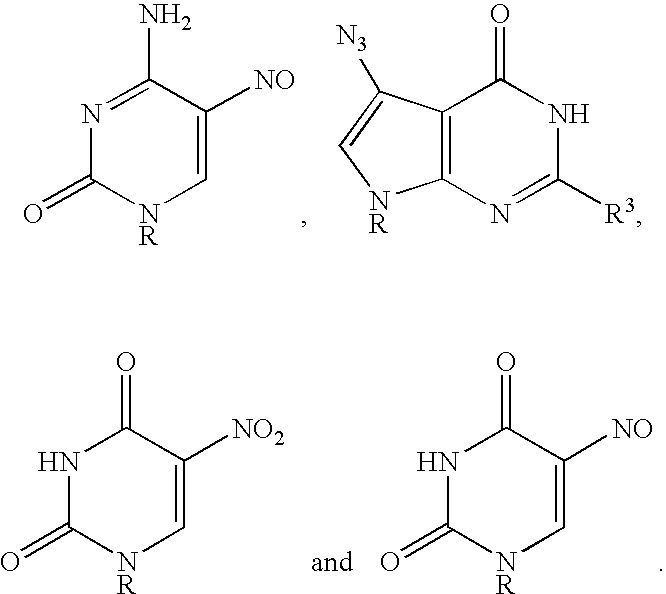Base-modified nucleotides and their use for polymorphism detection
a technology of base-modified nucleotides and polymorphism detection, applied in the field of base-modified nucleotides and their use for polymorphism detection, can solve the problems of detecting 30 million variances and then determining which of them are relevant to human health, and the current dna sequencing technology is expensive and time-consuming
- Summary
- Abstract
- Description
- Claims
- Application Information
AI Technical Summary
Problems solved by technology
Method used
Image
Examples
examples
1. Cleavage of Base-Modified Polynucleotide Using Secondary Amines
[0141]As noted previously, secondary amines having high boiling points at atmospheric pressure (>100° C., preferably >150° C., most preferably >200° C.) are presently preferred chemical bases for cleaving base-modified polynucleotides. These amines have several advantages. Their high boiling points results in less, if any, of the amine being lost due to volatilization during the cleavage, which provides improved control of stochiometry during cleavage and of purification prior to MALDI-TOF mass spectrometric analysis. In addition, the high boiling amines are substantially less odiferous at the temperatures required for cleavage, i.e., 80° C. or higher, preferably, at present, greater than 90° C. and most preferable at present between 90° and 100° C. Presently preferred high boiling secondary amines include 3-pyrridinol, 2-pyrrolidinemethanol, 3-pyrrolidinemethanol and 4-piperidineethanol.
[0142]FIG. 2 shows the results...
PUM
| Property | Measurement | Unit |
|---|---|---|
| boiling point | aaaaa | aaaaa |
| boiling point | aaaaa | aaaaa |
| boiling point | aaaaa | aaaaa |
Abstract
Description
Claims
Application Information
 Login to View More
Login to View More - R&D
- Intellectual Property
- Life Sciences
- Materials
- Tech Scout
- Unparalleled Data Quality
- Higher Quality Content
- 60% Fewer Hallucinations
Browse by: Latest US Patents, China's latest patents, Technical Efficacy Thesaurus, Application Domain, Technology Topic, Popular Technical Reports.
© 2025 PatSnap. All rights reserved.Legal|Privacy policy|Modern Slavery Act Transparency Statement|Sitemap|About US| Contact US: help@patsnap.com



